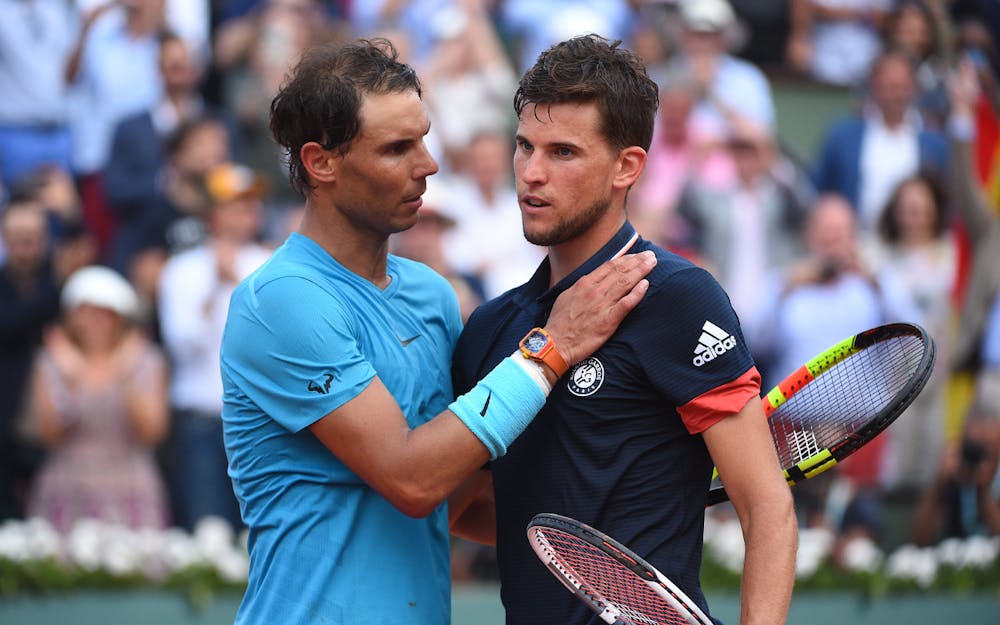Read more
Unstoppable

Dominic Thiem had a plan, but Rafael Nadal laid his strategy to waste to win an 11th Roland-Garros crown.

John McEnroe once declared beating Rafael Nadal on clay in a best-of-five-set showdown as the toughest task in sport, let alone tennis.
Dominic Thiem would be the first to agree after his 6-4 6-3 6-2 defeat in his maiden Grand Slam final at Roland-Garros on Sunday.
As the only player to have beaten the Spaniard on clay in each of the past two years, Thiem was attempting to become just the third player to defeat Nadal on his most hallowed of courts.
Nadal’s ability to wear down an opponent in a best-of-five-set match on the vast expanse that is Court Philippe-Chatrier is a whole different prospect to catching him out in a lights-out two-set triumph in a clay-court lead-up tournament.
This is the major Nadal pins his season on and Thiem was reminded why in brutal circumstances.
Thiem knew his chances hinged heavily on his ability to take control of the point on serve. If he was to stay the distance to hand Nadal just his third defeat at Roland-Garros his first serve, in particular, had to pick up some cheap points.
While both players increased their percentage of points won on first serve incrementally each set, Nadal finished the match far with a dominant margin, claiming 82 per cent to Thiem’s 67 per cent. In the only match of the tournament that Nadal dropped a set – his four-set triumph over Diego Schwartzman – he was broken five times from a hefty 20 opportunities.
Thiem, by contrast, broke just once from a miserly three chances. He simply wasn’t getting much of a look in on Nadal’s serve.
As one of the two players to have beaten Nadal at Roland-Garros, Robin Soderling is among the most at liberty to dissect what it takes to achieve the improbable on Court-Philippe-Chatrier.
“It's important that he shows himself, and that he shows Rafa and everyone, that he's on the court to win,” Soderling said. “Sometimes I see many, many players, top players, they go on the court against Rafa on clay, they hope that they will win, but they don't really believe it.”
Understandably for Thiem, there were nerves at play, contesting his first Grand Slam final. But with Nadal able to break early in each of the three sets, the Spaniard was immediately at ease on his most successful court, flattening out his backhands and opening up the court before he was in a position to dictate the points with his ferocious forehand.
The pressure showed on the Austrian throughout as he was forced to go for more, desperate to play catch-up.
Soderling nailed the game plan to aplomb in 2009, as did Novak Djokovic in 2015. “He would need to … really take some risks and not care if he makes more unforced errors than usual,” Soderling said of facing Nadal. Thiem knew this all too well, as it was this very strategy of all-out aggression that landed him his three victories over the world No.1 in the past 2.5 years.
The Austrian though, just couldn’t string together the winners consistently on Sunday as time and again he was brought unstuck missing too many makeable balls. In the longer rallies, Nadal’s brilliant movement helped him keep the improbable points alive, often targetting Thiem’s backhand until he eventually drew the short reply. Thiem’s backhand slice was fodder, as the Spaniard stepped around to clock assertive forehands at will.
While the Austrian did finish with more winners – 34 to 26 –his unforced error count ballooned as his spirit was broken deep in the match, with Nadal’s 24 nearly half the whopping 42 that flew from the strings of his opponent. Comprehensive in all facets, Nadal’s 11th Roland-Garros final was among his most dominant.